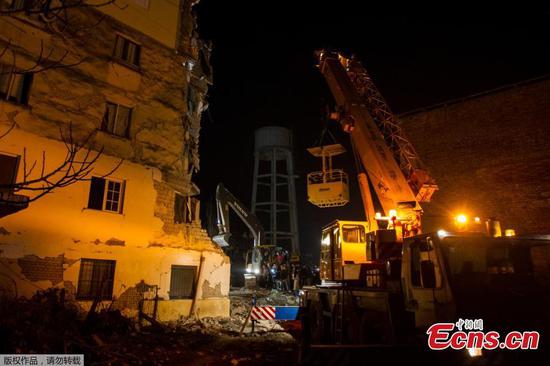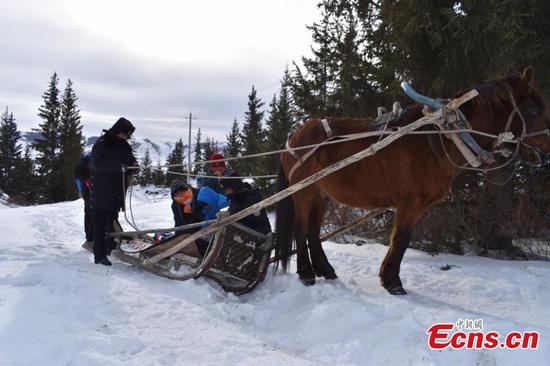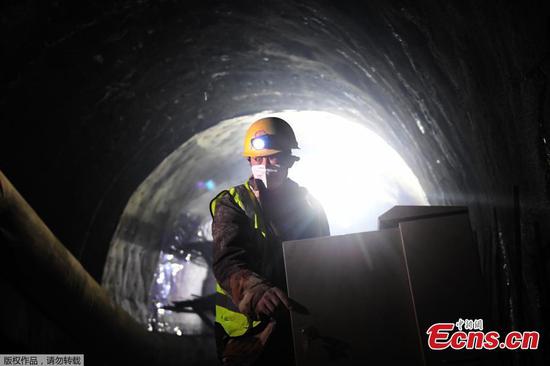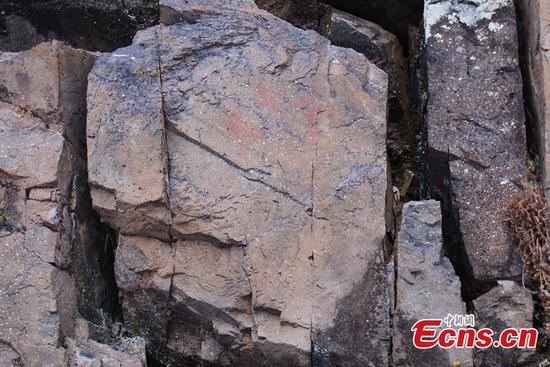
A heavy-duty lorry receives a load of coal at a yard in Huaibei, East China's Anhui province. (Photo provided to China Daily)
China is capable of achieving coal consumption control goals set in the energy sector's 13th Five-Year Plan (2016-20), a senior official of the China National Coal Association said.
The goals are to cap coal consumption at 4.1 billion metric tons by 2020, and to reduce the proportion of coal in primary energy consumption to less than 58 percent by 2020 from 64 percent in 2015, cutting coal's share in the energy mix and making room for clean energy.
Zhang Hong, deputy secretary-general of the association, said at a media conference on Monday that reducing coal's share of China's primary energy consumption is achievable given that it had already dropped 1.7 percentage points year-on year for the first nine months of 2019. Coal's share was 59 percent for last year.
The fast development of new and clean energies also contributes to the decline of coal's share in the primary energy mix, he added.
From January to October, China's consumption of coal increased by 0.8 percent year-on-year, and he forecasts the total consumption this year will be slightly higher than last year's 3.9 billion tons, but will remain lower than the goal of 4.1 billion tons.
"It is certain that China will achieve the two goals on coal consumption control," he said.
The overcapacity campaign in the coal industry, which began in 2016 as part of China's ongoing supply-side reforms, has brought about impressive progress in the industry's operation and transformation, Zhang added.
Statistics from the National Energy Administration showed the country removed 100 million tons of excess coal capacity in the first eight months of 2019, having already cut a total of 810 million tons by the end of 2018.
"Cutting overcapacity has led to a rebalance of coal supply and demand. Oversupplies had haunted the industry throughout 2012 to 2015," he said.
Coal prices which are jointly decided by fixed midterm and long-term contracts and fluctuating benchmark prices have remained stable and were in a reasonable range in the past few years, he explained.
That has contributed to the increased profitability of the coal industry, based on data from the National Bureau of Statistics.
In 2015, profits of the coal industry totaled 44.1 billion yuan ($6.7 billion). Those profits in the first nine months this year now stand at 216.5 billion yuan.
The industry also recorded progress in upgrading operations and optimizing the industry's structure, thanks mainly to a reduction in overcapacity.
The total number of coal mines in China has dropped to 5,600, with the proportion of large-scale modern coal mines having increased significantly. In 2015, China had 12,000 coal mines, among which most were small mines with annual output of less than 300,000 tons.
The annual output of large and modern coal mines makes up 80 percent of China's total coal output, reversing the past dominance of medium-to-small mines in coal production, Zhang said.
The rise of modern and large-scale coal mines, equipped with advanced devices and hiring less but well-educated staff members, also largely cut safety incidents during production, he said.
But Zhang pointed out that despite national coal supply and demand staying balanced in recent years in the northeast and southwest regions, demand sometimes outstrips supply partly due to a lack of coal resources.
The upcoming the 2019 Winter National Coal Trade Fair, to be held in Rizhao, Shandong province, next month, will help sustain the balance of supply and demand. The fair is a national platform for industry people to communicate and to arrange medium-to-long-term contacts, he said.


















































